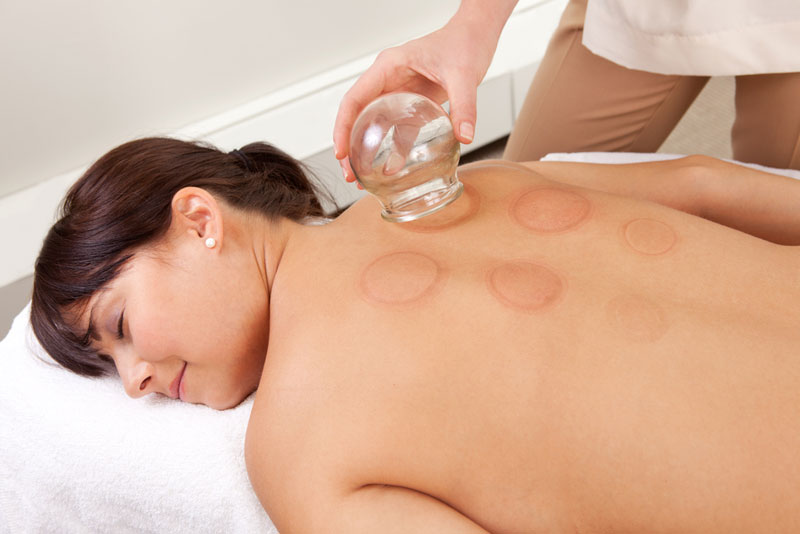Michael Phelps' Weird Bruises: Does Cupping Therapy Really Work?

Several Olympic athletes, including swimmer Michael Phelps, have appeared in Rio with odd-looking circular marks on their bodies. These marks are the result of "cupping therapy," a traditional Chinese medicinal practice for muscle healing. But does it really work?
Although many athletes say they've experienced benefits from the therapy, there are few rigorous scientific studies on the topic, and it's unclear if the treatments' perceived benefits could be due to the placebo effect, experts said.
"I don't think the science of whether it works is really solved," said Dr. Brent Bauer, director of the Mayo Clinic Complementary and Integrative Medicine Program. In addition, the treatment should not be thought of as a "magic cure" for people's aliments, he said. But because the treatment is relatively safe and there is some evidence that it could be helpful for some people, the therapy can be used as a part of a comprehensive treatment program involving other exercises, nutritional choices and lifestyle interventions, Bauer said. [Wishful Thinking: 6 'Magic Bullet' Cures That Don't Exist]
Cupping therapy involves attaching circular cups to the skin using suction. The suction is created either by heating the cup inside (which forms a vacuum) or by using a handheld pump. This suction pulls the skin upward into the cup. Supporters of the treatment say the suction increases blood flow to the area, which, in turn, reduces muscle tension and inflammation, and promotes healing.
But the therapy can also cause small blood vessels to burst, leading to the distinctive circular bruises. These bruises may last anywhere from about three days to several weeks, said Marcus Williams, a physical therapist at The Ohio State University Wexner Medical Center who uses cupping therapy.
Some smaller studies have suggested that cupping therapy may reduce knee pain and neck pain. For example, a 2011 study of 50 people with chronic neck pain found that those who received five treatments with cupping therapy over two weeks reported a larger decrease in their pain than people who didn't receive the treatment.
But this study included what's called a passive control group — a group that did not receive any treatment at all. That makes it hard to determine whether the perceived benefits of cupping could result from a placebo effect, the researchers said. (A placebo effect is one that results from people's feeling that the treatment works, rather than any physiological effect of the treatment.) The researchers called for more studies to compare the effectiveness of cupping therapy with placebo treatments.
Get the world’s most fascinating discoveries delivered straight to your inbox.
To tease out whether a therapy's benefits result from a placebo effect, researchers sometimes try to "blind" their subjects, meaning the participants don't know whether they are receiving a given treatment. But with cupping therapy, this is difficult because the therapy can leave marks, according to the 2011 study. Some researchers have tried to get around this problem by providing a "sham" treatment, which is similar to the real treatment but is done in a way that should not provide benefit.
In a 2015 study, researchers from Germany tested whether cupping therapy worked better than a sham treatment for patients with fibromyalgia, a chronic disorder that causes widespread pain, tenderness and muscle stiffness. Both the real treatment and the sham treatment used the same type of cups, but with the sham treatment, the cups had a hole at the top so that they couldn't create the proper suction. (Patients in the study were told they would receive either traditional cupping or "soft cupping," but they were not told that the so-called soft cupping was a sham treatment.)
Most patients in the study correctly guessed whether they'd been given the traditional cupping or the soft cupping. Patients in both groups experienced about the same reductions in pain, which suggests "the effects of cupping therapy might be confounded" by effects that are not specific to the treatment itself, the researchers said.
Regardless of whether cupping therapy's perceived benefits result from a physiological effect or a placebo effect, the therapy could still be useful for some people, Bauer said. "If that's the treatment that gives me benefit … if that's the time that I reduce my suffering [with this therapy] … then I think we have to be a little more open to the idea of allowing patients some choice," as long as the therapy is safe, Bauer said.
Harmful effects from cupping therapy are rare, Bauer said. In one study of cupping, some patients reported a tingling sensation in their hands and arms, strain or pain in the treated area, and slight headache and tiredness, but none of the effects lasted longer than 4 hours. In some cases, people may develop infections over bruised skin, but the risk is small, Bauer said.
Original article on Live Science.

Rachael is a Live Science contributor, and was a former channel editor and senior writer for Live Science between 2010 and 2022. She has a master's degree in journalism from New York University's Science, Health and Environmental Reporting Program. She also holds a B.S. in molecular biology and an M.S. in biology from the University of California, San Diego. Her work has appeared in Scienceline, The Washington Post and Scientific American.



